Introduction 介紹
本文的目的是查明占星學用於評估與分類天王星、海王星和冥王星的方法,並探索這些最早的發現是否依據經驗以及後來的研究而有所修正或變化。後續內容將顯示目前所使用的象徵意義,其本質上仍與最初試探性的階段完全相同,且該象徵意義主要來自於一種意識形態。
追查象徵意義形成的過程非常錯綜複雜,需考量各種文化、哲學與社會記述集結而成的線索。關於七顆「古典」行星,由於年代久遠,研究人員不得不採納有限又零碎的資源1。然而,天王星、海王星和冥王星這三顆土星外行星(the trans-Saturnian planets)是近代才發現的,還有大量公開可得的資料,因此才讓調查得以順利進行2。
豐富的三王星資料,再加上大量使用這些行星的占星家們,不僅確立了三王星的象徵意義,而且使用三王星的占星家也大多認同三王星的象徵意義大致是可靠的。雖然,也有些占星家僅在有限範圍內運用三王星,甚至仍有少數完全不使用三王星,但在占星學於啟蒙時代(西元一六五○至一八○○年)失寵之前,隨著占星系統的日益普及和應用,後二者採用三王星的人數已逐漸增多3。直到西元一九三○年發現冥王星時,雖然仍有類似意見的分歧,但來自未必使用新行星的占星著作也只在少數。
The Discoveries 發現
威廉.赫雪爾(William Herschel)在西元一七八一年發現他命名的「喬治之星」(Georgium Sidus),也稱「赫雪爾」或「赫雪爾行星」(Herschel’s planet)4,繼波德(Bode)和約翰.柯西.亞當斯(John Couch Adams)提出建議後,「天王星」的名稱直到西元一八五○年才受到認可。西元一八四六年,於爾班.勒威耶(Urbain Leverrier)宣布發現海王星,但後來亞當斯也共享這份榮譽。克萊德.湯博(Clyde Tombaugh)於西元一九三○年在羅威爾天文台(Lowell Observatory)發現冥王星,占星家一度將這顆行星命名為羅威爾冥王星(Lowell-Pluto),以便區別假定的冥王星(韋米斯冥王星Wemyss-Pluto)5。其中天王星是三王星中唯一能以肉眼所見的行星 6。
Naming of the New Discoveries 新發現的行星命名
天王星與海王星是依據以古典神祇為行星命名的慣例而命名。天王星(Uranus)又稱烏拉諾斯(Ouranos),後者是希臘的天神,也是克洛諾斯(Cronos)之父。海王星(Neptune)則是取名自羅馬諸神中的小神,同時合併克洛諾斯之子波塞冬(Poseidon)的傳說。然而,冥王星(Pluto)則是根據一些建議而命名的,包括以帕西瓦爾.羅威爾(Percy Lowell)的妻子為名的康絲坦斯(Constance),以及火神 ——祝融星(Vulcan)。但最終的名稱乃是來自於英格蘭牛津郡一位11歲女孩的提議;據說布魯托(Pluto)是她最喜歡的迪士尼卡通角色,但實際上似乎是迪士尼以這顆行星的名稱來為卡通狗命名的 7。
事實是,天文學家並沒有依據任何占星學的象徵意義來替這些行星命名,但這卻無法阻止占星家們以共時性(synchronicity)為由而漠視所有的反對意見,並且利用這些與神祇相關的神話作為它們的象徵意義;在發現冥王星後的前期,也有些人抵制它的名字:
不幸地,天文學家給它取了一個不合適的名字:「冥王星」,這個名稱已被賦予另一顆守護巨蟹座的假定行星。為避免混淆,占星界必須將最初的冥王星稱為韋米斯冥王星 8,將羅威爾的行星稱為羅威爾冥王星9。
Sources 資料來源
本文對這些行星的部分公開資料進行檢視,並與目前占星家所接受的象徵意義進行比較,以確定早期占星作家公開的研究結果與近年的發現有哪些異同之處,如此,便能推估早期對這些土星外行星「影響」的觀察,為當代思想帶來了什麼樣的影響,以及後來的觀察者所做的任何改變。
儘管出版個人研究的占星家可以使人充分了解到他們觀點的展開,但對整個占星界,尤其對學生來說,正是這些著作為他們帶來了影響。這些學生們將這些概念發揚光大,並持續將概念傳遞下去。這並非假設所有的占星家都同意這些出版的論述,但這樣的論述卻會讓讀者留下深刻的印象,也影響後來的占星實踐。
本文使用的資料來源包含發現三王星後不久所發表的作品,其中最重要也是產量最少的,是發現天王星之後的作品。這太陽系新成員的首度出現,為我們提供了關於當時的占星作家是如何受到相關見解的影響。由於既存的占星象徵意義已經發展了數千年,十八世紀的占星家面臨到必須想辦法填空的處境。以下將以天王星象徵意義的歸類方法,與海王星和冥王星的歸類方法進行比較。
為了找出發現天王星之後一世紀早期觀點的發展,本文研究了十九世紀末與二十世紀初的著作,特別是二十世紀中葉被公認具有影響力的作者們,因為這段時期標誌著占星學的復興,越來越多的學生受到占星學的吸引,相關教科書的出版量也急速增加。正如接下來所說明的,此一時期天王星與海王星的象徵意義正在確立當中,且預期將會發現更多的行星。本文稍後將示範這套方法如何應用於冥王星。
現代的資料來源包含某些主流占星學派推薦給學生的著作。如此選擇並非因為這些著作宣揚的象徵意義受到廣泛接受,而是因為正在學習或曾接觸這些學派的學生眾多。其中,有許多著作專門針對初入門,或是根本沒有占星概念的學生,因此可以理解為何這些學生必然較不會去挑戰公認的知識體系,因為他們缺乏資訊將所學的進行比較。由此推斷,這些著作所宣揚的象徵意義,已經且持續對占星學的實踐產生廣泛性的影響。
某些年度曆書和雜誌亦被引據作為參考,因為其中可能有非正式的討論和意見發表。這些常態性出版的刊物也是可以作為密切觀察其觀點發展的有趣辦法,至少,是白紙黑字的紀錄。
威廉.里利(西元一六○二至一六八一年)撰寫的《基督教占星學》(Christian Astrology)在十七世紀中晚期被視為占星學的入門指南10,因其內在價值堪稱占星學的教科書,而且自出版後的幾個世紀已受到許多人的認可。約翰.沃斯代爾(John Worsdale)曾寫道:「約翰.帕特里奇(John Partridge)先生和威廉.里利先生的著作,比這個國家出版的所有其他著作都更有價值」,同時譴責加德伯里(Gadbury)、科利(Coley)及西布利(Sibly)是「抄襲者」和「冒牌貨」,這意味著,不僅是他崇敬整個十七世紀的占星學,包括後來作者所提供的參考書目或資料來源也經常引用里利的著作 11。
幾乎找不到有人反對將新行星納入系統的公開證據。關於是否該接受新行星有其占星象徵意義,這問題或許能從這類的反對聲浪中推導而出,但可惜的是並無具體證據,因為他們的反對不符合當時的趨勢,所以很難找到願意協助的出版商。值得留意的是,許多占星作者也是神智學家(Theosophists),他們可以使用協會自營的出版社,這是很大的優勢。
The Historical Context 歷史背景
發現這些土星外行星的時代背景,正是發生在政治、社會、科學與經濟廣泛地發生變化與進展的時期,「進步」與「科學」是當時的口號。天王星的發現是在啟蒙時代末期(西元一六五○至一八○○年)與工業革命時期(西元一七○○至一九五○年);海王星的發現是在英國全盛時期以及旅遊、通訊普遍歷經激盪變革的時期;冥王星的發現,則剛好發生在西元一九二九年經濟大蕭條的時期,當時工業化國家對於蓬勃發展的信心與自信,隨著華爾街股市一同崩盤,這讓占星家與所有人都留下了深刻的印象,也正是這些事件、發明與成就,描繪了部分土星外行星的象徵意義。
占星學在啟蒙時代失寵後,不再被知識份子視為是嚴謹的研究,也不再受到教會的監察與批評,這表示占星學的影響力正在式微。尋求占星協助的貴族越來越少,再加上大眾的嘲笑,都是占星學走向衰亡的徵兆。占星文獻在西元一七○○年以後開始減少,以前含有占星內容且廣受歡迎的年度曆書也是。十七世紀末,占星學開始沒落,而且早已「不再活躍於學術界並喪失了尊嚴」12,在此之前的英國,占星家會透過出版年度曆書來獲得地位與聲譽,這為他們提供一個有效的宣傳平台。十八世紀初期,隨著知名占星家相繼逝世,占星學相關內容的文獻遞減且後繼無人13。十七世紀末,占星學在科學界的地位衰退,反而激發了革新的動力使占星學重拾尊嚴,並融入了新的科學模式。而在面對當權派的嘲笑與科學的進步當中,占星家們也試圖恢復人們對占星學的關注與敬重。
十七世紀的占星家將自己視為藝術家,這也反映在他們出版作品的書名上,例如:《基督教占星學》、《微泛占星:占星學手冊。占星藝術簡易教學》(Mikropanastron: Or an Astrological Vade Mecum. Briefly Teaching the whole Art of Astrology)14、《占星藝術大全要領》(Key to the whole Art of Astrology)15。十九世紀,西布利採取更加普遍,又或許更安全的方式來命名他的著作:《占星天體學的全新完整實例說明》(A New and Complete Illustration of the Celestial Science of Astrology);或《預測未來與意外事件的藝術》( the Art of foretelling future Events and Contingencies)16,並稱占星學為天體學(Uranology)。如前所述,沃斯代爾的書也涵蓋了如天體哲學(Celestial Philosophy)或生時天文學(Genethliacal Astronomy)的觀點;他還自稱是天文學家,而非占星家。不只是書名的性質發生變化,其內容也反映出當時漸進的趨勢。
The Rationalisation of Astrology 占星學的合理性
伴隨改革而來的是傳統知識體系的消散與衰退。由於堅持對前人的理論和原則進行質疑以符合當時的科學理性精神,占星系統及其象徵意義也開始出現了「變化;即任何事情都不能被視為理所當然,也不能凌駕於新的研究法則之上。占星家將這點銘記在心,並開始質疑已存在幾個世紀的理論原則。但他們似乎無法理解科學家在實驗時有多嚴謹,更別說要去應用這樣的科學方法。此時任何經不起「理性」考驗的都會被捨棄。舉例來說,根據拉斐爾(Raphael, R.C. Smith的筆名,西元一七九五至一八三二年)的說法,界(term)與外觀(face)這些先天尊貴(essential dignities),只是為了解釋未知行星的影響而創造的:「他們(古人)持續沒來由地遵循某些影響,經常將部分影響歸於錯誤的原由,……因此,現今的經驗才導致我們否決界與階段(Phases)的理論」,如他所說的兩個三分性主星,以及掌管星座日夜間行星的法則就像是「古代遺留下來的迷信」,是「多餘且失真的」17。我們也發現這樣的主題在後來不斷出現,例如「在『卜卦』占星學中作為神秘行星(天王星)的替代品;古老的傳統不是遺失,就是變得腐敗和扭曲,以至於占星學不再被稱為科學,而只是一種占卜方式」18。
與新興科學原則相反的是,他們並沒有為這些傳統觀點的排除提供任何證明,而是透過「經驗」等其他的科學原則來加以合理化。儘管從未加以說明,但他們還是否認了行星在日夜間的守護關係(Sect區間的關鍵法則),以便讓新行星能夠被納入系統中。太陽與月亮各守護一個星座,這讓其他五顆行星都守護兩個星座的合理性受到質疑,因此他們對於新系統的結論是:太陽系需要有十顆行星與兩顆發光體。日月的晝夜區間與先天尊貴法則(稍後都會解釋)都是占星系統的根本,一旦這些變得毫無根據,占星學就會為了迎合解盤者及當時「科學」的氛圍而走樣。這麼一來,占星學將會失去效力與可靠性,錯誤變得越來越多,也較難進行具體的預測。
準確性與可信度是科學的準則,因此他們必須對這種欠缺提供合理的解釋,他們通常歸咎於幾個原因,但都不是為了反映新的科學占星學,而是這些占星家認為—這都是古代占星家跟他們的系統所造成的:
我們的先人身為占星家卻欠缺天文知識,他們大多只透過迷信的眼光來闡述內容,但在現代已被先進的科學知識所取代 19。
而「不完整的太陽系理論」也被視為是為了解釋這些錯誤而產生的:
當考量到這顆行星(天王星)必為古代占星家的判斷帶來多大的困惑時,我們也在思考,在這顆行星的軌道之外,可能還有其他同樣強大的行星尚未被發現,這讓我們不得不表示,那些期望占星家們絕不會出錯的人,是多麼無知和愚蠢 20。
這裡,我們看見了如何能在不可靠的系統之上運作且仍自稱是正確的例子。他們表示,占星家不能為「尚未發現的行星」負責,這些行星仍是引起占星學誤判的原因。這樣的態度,直到十九世紀末到二十世紀初期,在神智學占星家(Theosophist astrologers)的影響下又再次出現。
神智學占星家認為,完整的系統將帶來遠遠超越過去成就的準確性,即使他們尚未做到,這也將是未來占星家們的職責所在:
在我們的太陽系中存在尚未被科學發現的行星,這件事似乎對占星家來說是最重要的。即便這三王星能夠被重新發現和測試,就如同我們過去對天王星的測試,以及像現在對謎樣般的海王星所做的一樣,這三顆神秘的三王星可能還是無法為這麼多理論上的疑點與錯誤提供解釋。只要行星和它深奧的本質仍處在隱藏的狀態,我們就必須悲哀地承認,我們還只是在成為真正占星家的門檻上摸索,而尚未深入內在的殿堂21。
只需再發現另外三顆新行星就能掌握「占星學真理」的信念不僅太過單純,也為他們免除了準確性的義務。有證據顯示,就算在發現海王星(如前文所述)與冥王星之後,這些想法依然存在,而這些發現不僅沒有解決不可靠的問題,反而引發了更多問題,因為這些占星家是參考新行星本身的性質來解答這些問題:顯然我們無法徹底了解這些行星,因為它們天生神祕又無法預測。
許多天體的發現,以及備受尊敬的天文學家所提出的假定行星(hypothetical planets,祝融星為其一,最終被證明是錯的),為占星學的合理化之戰提供了彈藥,但卻從來沒人提過新系統本身的缺陷,或是新行星不可預測的神秘性源自於它們缺乏作用與影響。
與此同時,占星學仍持續通俗化,其哲學性質逐漸受到遺忘,導致某些原理越來越難以理解,後來便被捨棄,甚至被個人觀點與新行星所取代。
除上述原因之外,隨著如威廉.里利、約翰.帕特里奇(John Partridge,西元一六四四至一七一四年)與約翰.布克 (John Booker,西元一六○三至一六六七年)等占星學指標性人物的殞落,口述傳授的傳統也跟著消失,因此,占星學子比往日更仰賴大師們的著作,但是卻也因為無人解釋或指導,學生們只能自行領會。其中較有經驗的出版者明確表示,相信自己的理解而不參考他人是值得認可的:「…暫時放下托勒密(Ptolemy)來發展一些獨創性。在他(A.J. Pearce皮爾斯)的教科書中少一點前人的觀點,多一點的獨創性會更能被接受,因為我認為托勒密已無用武之地22。」
「獨創性」成為出色占星學的先決條件,占星家們不再參考過去幾千年占星界權威的見解,唯有個人的理解、累積的經驗與直覺在新的系統中才有價值。
繼續閱讀:第二集《神智學會與新時代》
Uranus, Neptune, and Pluto:
An Investigation into the Sources of their Symbolism Part 01
Sue Ward (Written 2002)
Introduction
The purpose of this paper is to ascertain the methods used to evaluate and classify Uranus, Neptune, and Pluto, in astrological terms, and to discover whether those original findings have been modified or changed with experience and later study. It will be demonstrated that the symbolism currently in use remains materially the same as those first tentative steps, and that that symbolism was drawn largely from one ideology.
Tracing symbolic derivation is complex and convoluted: account needs to be taken of the various contributory threads accreted by cultural, philosophic, and social considerations. In relation to the seven ‘traditional’ planets, researchers have had to use limited and fragmentary sources because of their antiquity.1 With the trans-Saturnian planets of Uranus, Neptune and Pluto, however, investigations are facilitated by their recent discoveries and by the large volume of published material that is available.2
With this abundance of material focused upon Uranus, Neptune, and Pluto, and the high number of astrologers who implement these planets, it suggests that their symbolism is certain and established. The latter is true in that the majority of astrologers accept the symbolism of these planets as substantially definitive. There are also those who employ them in a limited way, and fewer still who do not use them at all. The latter two groups have become larger with the increasing popularity and application of astrological systems predating astrology’s fall from favour during and subsequent to the Age of Enlightenment (1650 – 1800).3 By the time, of Pluto’s discovery in 1930, there were similar divergences of opinion, although there is little astrological literature from those who did not hold to the use of the new planets
The Discoveries
William Herschel discovered the planet he named ‘Georgium Sidus’ in 1781, which also became known as ‘Herschel’ or ‘Herschel’s planet’.4 Following suggestions by Bode and John Couch Adams, the name ‘Uranus’ was accepted only in 1850. In 1846 Urbain Leverrier announced Neptune’s discovery, but joint credit has since been given to Adams. Clyde Tombaugh at the Lowell Observatory discovered Pluto in 1930. For a time, astrologers styled this planet Lowell-Pluto to distinguish it from the hypothetical Pluto (Wemyss-Pluto).5 Uranus is the only one of these that can be seen with the naked eye.6
Naming of the New Discoveries
Uranus and Neptune were named in accordance with the tradition of naming planets according to classical pantheons. Uranus, or Ouranos, the Greek god of the heavens and father of Cronos. Neptune was a lesser god of the Roman pantheon who absorbed the legend of Poseidon, son of Cronos. Pluto, however, was named following a number of suggestions, including ‘Constance’ from Percy Lowell’s wife, and ‘Vulcan’. The name came from an 11-year-old girl in Oxfordshire (England) and it has been said that Pluto was her favourite Disney character, when it appears that Disney named the cartoon dog after the planet.7
The fact that astronomers had named these planets, naturally without any reference to astrological symbolism, did not deter astrologers. Having brushed aside all objections in the cause of synchronicity, they proceeded to draw upon the myths associated with these gods for their symbolism. In the early days following Pluto’s discovery, some resisted its name:
Unfortunately astronomers have given it the unsuitable name of Pluto, a name which had already been given to a different hypothetical planet (ruling Cancer). To avoid confusion it is necessary in astrological circles to refer to the original Pluto as Wemyss-Pluto8 and to the Lowell planets as Lowell-Pluto.9
Sources
Some of the published material relating to these planets is examined and compared to the accounts of their symbolism presently accepted by astrologers. This is done to identify similarities, or otherwise, between the published findings of the earlier astrological authors and those of more recent years. In so doing, the impact made by early observations of the ‘influences’ of the trans-Saturnians on current thought can be approximated, and any changes made by later observers noted.
While research of the private papers of published astrologers would prove fruitful in discovering the development of their opinions, it was their published works that had impact on the astrological community at large, particularly students. Those students carried forward and transmitted those ideas. It is not assumed that all astrologers agreed with these published accounts, but such accounts would impress upon their readers and thus affect later practice.
The sources used for this paper include works published soon after the discoveries of these planets, the most important (and the least prolific) being those that followed the discovery of Uranus. As the first incidence of a new member of the solar system, it provides an insight into how that affected astrological authors. Since the existing astrological symbolism had been developed over millennia, eighteenth-century astrologers were faced with finding a way of addressing a blank sheet. Methods of ascribing symbolism to Uranus will be compared to those used for Neptune and Pluto.
The writings of authors of the late nineteenth and early twentieth centuries are explored to find development of early opinions following a century of experience of Uranus. Those authors known to have been influential through to the middle years of the twentieth century are highlighted because this period marked a renaissance for astrology. A growing number of students were attracted to it and books of instruction proliferated. As will be shown, the symbolism of Uranus and Neptune was becoming established and the possibility of more planets being discovered was anticipated. This material, then, will demonstrate the method that would be applied later to Pluto.
Modern sources include works recommended for students by some of the major schools of astrology. These were not chosen because the symbolism they promote is universally accepted, but because of the numbers of students who are, or have been, exposed to it through these schools. (Many of these works are addressed specifically to students who have little or no previous knowledge of astrology.) Such students will, necessarily and understandably, present fewer challenges to the accepted body of knowledge precisely because they have no information with which to compare what they are being taught. From this it is deduced that the symbolism promoted in those published works will have had, and will continue to have, a wide influence on astrological practice.
Certain almanacs and magazines are also referred to because within their pages might be found less formal discussions and airings of views. Their more frequent publishing also provides an interesting monitor of the way opinions were developing, at least, in print.
Christian Astrology by William Lilly (1602-1681) is used as a general guide to the astrology of the mid to late seventeenth century.10 The reason for this is its intrinsic value as an astrological textbook, acknowledged as such by many at the time of its publication and through the centuries following. John Worsdale writes: “The Works of Mr. John Partridge, and Mr. William Lilly, are of more value than all others that have been published in this Kingdom;” whilst castigating Gadbury, Coley, and Sibly as ‘pirates’ and ‘impostors’, indicating that he was not simply revering the astrology of the seventeenth century as a whole. Those later authors who provide bibliographies or sources often refer to Lilly.11
Little published evidence can be found of those who resisted the incorporation of the new planets into the established scheme. The question of whether the new discoveries should be accepted as having astrological symbolism at all might be inferred from such resistance, but there is no specific evidence. Their resistance was at odds with the trends of the time making it difficult to find a publisher. It should be noted that many of the astrological authors were Theosophists who had the great advantage of access to the Society’s own publishing house.
The Historical Context
The background against which the discoveries of the trans-Saturnian planets took place was of wide-ranging political, social, scientific, and economic changes and advances. ‘Progress’ and ‘science’ being the watchwords of the period. Uranus’s discovery occurred towards the end of the Age of Enlightenment (1650-1800) and within the Industrial Revolution (1700-1950). Neptune was discovered when Great Britain was at the height of its power and influence and when travel and communications generally were undergoing radical change. Pluto’s discovery coincided with the World Economic Recession, which began in 1929, when the booming confidence and self-assuredness of the industrialized nations crashed along with the Wall Street Stock Market. The mood of the times was impressed upon astrologers as much as anyone else, and it was from these events, inventions, and achievements that part of the symbolism of the trans-Saturnian planets was drawn.
When astrology fell into disfavour in the Age of Enlightenment, the educated person was no longer inclined to take it up as a serious study. Astrology came under the scrutiny and criticism of the Church no more – an indication of the decreasing influence of astrology; fewer of the nobility availed themselves of its assistance, and the ridicule heaped upon it sounded its death knell. Astrological literature diminished after 1700 as did the astrological content of the previously, hugely popular almanacs. The end of the seventeenth century marked the beginning of the decline of astrology; it had “lost its intellectual vitality and respectability“.12 Previously, in England, the astrologer gained status and reputation through the publishing of almanacs, which provided an effective advertising platform. Through the early years of the eighteenth century, astrological content diminished as the famous astrologers died, with no-one to continue the work.13 With its loss of status within the scientific community towards the end of the seventeenth century, came the drive to reform astrology in order for it to regain respectability and to fit into the new scientific model. In the face of Establishment derision and scientific advances, the astrologers attempted to revive interest in, and respect for astrology.
In the seventeenth century, astrologers had considered themselves artists, and this is reflected in the titles of their published works: Christian Astrology, Mikropanastron: Or an Astrological Vade Mecum. Briefly Teaching the whole Art of Astrology,14 Key to the whole Art of Astrology, 15 for example. In the nineteenth century, Sibly, taking a broader and, perhaps, safer approach, entitles his work, A New and Complete Illustration of the Celestial Science of Astrology; or the Art of foretelling future Events and Contingencies and he styles astrology ‘Uranology’.16 Worsdale’s book, as noted previously, also covers both perspectives as Celestial Philosophy, or Genethliacal Astronomy and he entitles himself an astronomer, rather than an astrologer. It was not, however, just the book titles that altered in nature, but their content, too, reflecting the progressive trends of the time.
The Rationalisation of Astrology
With the reforms came the dissipation and degeneration of the traditional body of knowledge. The astrological system and its symbolism began to be changed in order to fit into the scientific rationality of the age that insisted upon the questioning of the principles and theories of their predecessors. Nothing could be taken for granted, or regarded as above the new laws of investigation. Astrologers took this to heart and went about questioning principles and theories which had been in place for centuries. However, they seemed not to understand, much less apply, the rigours that the scientists referred to in their examinations. Any principle that did not stand the test of ‘reason’ was discarded. For example, the essential dignities of term and face were, according to Raphael (R.C. Smith, 1795–1832), only invented to try to account for the effects of unknown planets: “continually finding certain effects to follow, the cause of which was unknown to them [the ancients], would frequently attribute partial effects to fallacious causes, … Hence the theory of the ‘Terms’ and ‘Phases’, which the experience of the present day leads us to reject“, as he does the principle of the two triplicity rulers, and the planets’ day and night rulership of the signs as, “a relic of ancient superstition” and as “superfluous and void of truth“.17 We find this theme repeated later, “substitutes were used to supply the place of the mystic planet [Uranus] in ‘horary’ astrology; the old traditions were either lost, or had become so corrupted and distorted that Astrology could no longer be called a science, but rather a mere mode of divination.”18
Contrary to their new-found scientific principles, no evidence was ever produced for these exclusions, justification being provided by that other scientific principle of ‘experience’. Even that was never demonstrated, although by rejecting the day and night rulerships of the planets (the crucial principle of sect), they paved the way for the inclusion of the new planets into the scheme. The rationality of the five planets having two signs of rulership each, when the Sun and the Moon had only one sign of rulership each, was questioned. They concluded that a solar system of ten planets and two luminaries was required for their new system. The solar and lunar sects and the principle of essential dignity, (both explained later) lie at the root of the astrological system; once it had become rootless, astrology could be bent this way and that to suit the operator and the ‘scientific’ mood of the times. In so doing, the astrological scheme lost its potency and reliability: errors were made in an increasing number and predictions became less specific.
Accuracy and reliability are maxims of science, so this lack needed to be rationalized, too, and it was attributed to several causes. None of these was held to reflect on the new scientific astrology – the ancient astrologers and their system caused it:
What our forefathers, as Astrologers, lacked in deficient astronomical knowledge, through which much of what they said was regarded through a superstitious eye only, is more than replaced in modern times by advanced scientific knowledge.19
An incomplete solar system was also held to account for these errors:
When we consider how much this planet [Uranus] must have baffled the judgment of the ancient Astrologers; and when we reflect also, that there may be other planets equally powerful, beyond his orbit, as yet undiscovered, we cannot help remarking the extreme ignorance and folly of those persons, who require from the Astrologer what they expect from no one else, infallibility.20
We see here an example of how it became possible to work with an unreliable system and still claim rectitude. The astrologer cannot be held responsible, they say, for planets that have not yet been discovered, but are, nevertheless, the cause of errors in astrological judgement. This attitude is encountered again when exploring the influence of the Theosophist astrologers of the late nineteenth and early twentieth centuries.
A complete system will result in an accuracy far beyond the achievements of the past, they say, even though they have not accomplished it, and which becomes the responsibility of future astrologers:
The fact that there are planets in our solar system which have not yet been discovered by science seems of the greatest importance to the astrologer. For how many doubtful points and errors in theory might not these three secret planets account, if they could be re-discovered and tested as we have tested Uranus, and as Neptune the mysterious is now being tested? So long as planets, and much more their esoteric natures, remain hidden, we must sorrowfully confess that we are only groping on the threshold of the true Astrologer, and that we have not penetrated to the inner shrine.21
The conviction that only the discovery of a further three new planets was needed for them to possess ‘Astrological Truth’, is not only simplistic, but absolves them of any obligation to accuracy. The evidence shows that these ideas persisted even after the discoveries of Neptune (as the preceding quote demonstrates) and Pluto. Far from resolving the problem of unreliability, these discoveries raised further questions, which were answered with references to the natures of the new planets themselves: apparently, it was not possible to understand these planets fully because their natures were those of mystery and unpredictability.
The many discoveries of heavenly bodies and the proposals put forward by respected astronomers of hypothetical planets, (one being Vulcan, whose existence was eventually disproved), gave them ammunition with which to fight the battle of rationalizing astrology. At no time was it ever mooted that the new system itself was faulty, or that the unpredictability and mystery of the new planets was caused by their lack of action or influence.
Concurrently, astrology’s secularization continued and its philosophy forgotten, thus it became increasingly difficult to understand certain principles, which subsequently were jettisoned to be replaced by personal opinions and the new planets.
Quite apart from the foregoing, with the deaths of the leading lights of astrology, such as Lilly, John Partridge (1644-1714), and John Booker (1603-1667), the oral tradition was lost. Students of astrology, more than ever before, had to rely solely upon the written works of the masters. With no-one to explain or to guide, the student was left very much to his or her own devices. The more experienced among them, those who were published, made it clear that it was acceptable to trust to one’s own understanding without reference to anyone else: “… dropped Ptolemy for once and developed a little originality. Less of the former in his [A.J. Pearce] Text-Book and more of the latter would have been more acceptable, for I consider Ptolemy used up.“22
‘Originality’ became the prerequisite for good astrology, no longer would astrologers refer to the past and its authorities of those millennia. Only personal understanding and experience, and intuition had value within the new system.
- Saturn, Jupiter, Mars, Sun, Venus, Mercury, Moon; also styled the Ptolemaic planets, referring to Claudius Ptolemy, c. second century AD.
- So called because their orbits lie beyond that of Saturn.
- These are often referred to, in chronological order, as ‘hellenistic’, ‘medieval’, and ‘traditional’. Each relates to an historical period, ‘traditional’ relating to the early modern period. All form part of the western predictive tradition.
- He named it Georgium Sidus after his patron King George III. Some called it the Georgian planet, for example, John Worsdale, Celestial Philosophy, or Genethliacal Astronomy (London, 1828), p. 57.
- Discussed later.
- Even at maximum visibility, Uranus is at the extreme of visibility for the naked eye.
- Lisa R. Messeri, ‘The Problem with Pluto: Conflicting Cosmologies and the Classifications of Planets’, Social Studies of Science, 40/2 (April, 2010), pp. 187-214.
- Maurice Wemyss (Duncan McNaughton 1892-1973), astrologer and postulator of many trans-Neptunian planets.
- Alan Leo, The Art of Synthesis (London, 1936), p. 123.
- Lilly, Christian Astrology.
- John Worsdale, Celestial Philosophy, or Genethliacal Astronomy (Lincoln, 1828), p. vi. As also, Sepharial (Walter Gorn Old), The Manual of Astrology (London, revised ed. 1962 of 1828 original), who quotes Lilly as a sourc, p. 75.e. The Astrologer’s Magazine (August 1890), vol.1. no. 1, p. 15 provides a horary from Christian Astrology : ‘If Presbytery shall stand’. (When compared to the original judgement it is clear that there are a number of errors and omissions in the magazine version.)
- Keith Thomas, Religion and the Decline of Magic (Middlesex, 1971), p. 424.
- Bernard Capp, Astrology & the Popular Press: English Almanacks 1500 – 1800 (London, 1979), p. 238.
- John Partridge (London, 1679).
- Henry Coley (London, 1676).
- Ebenezer Sibly (London, 1813, 11th edn), p. 53.
- Raphael (Robert Cross-Smith, 1795-1832), A Manual of Astrology or the Book of the Stars (London, 1828), p. 134.
- Alan Leo, Astrology For All: Part I (London, 1904), p. viii.
- Moreland Hickman, ‘Some Early English Astrologers’, The Astrologer’s Magazine, vol. 1, no. 7 (February 1891), p. 157.
- Raphael, Manual of Astrology, p. 72.
- Alan Leo, ‘The Seven Planets’, The Astrologer’s Magazine, no. 22, vol. 2 no.10 (May 1892), p. 516.
- George Wilde, ‘Are the Astrological Rules which Denote Fame Reliable?’, The Astrologer’s Magazine, Vol. 1. No.3 (October 1890), p. 62.
翻譯:Hueimin Lin/Julie Ho|編審:Maki S. Zhai
本文經作者授權翻譯刊登,其翻譯著作權歸屬 智者星象學院所有,歡迎分享本網頁連結給你的朋友,但請勿直接轉載內容。
This article is translated and published with the authorization of the author, and the copyright of this translation belongs to Astro Mages.org.
You may share the link to this page with your friends, but please do not directly reprint the content.


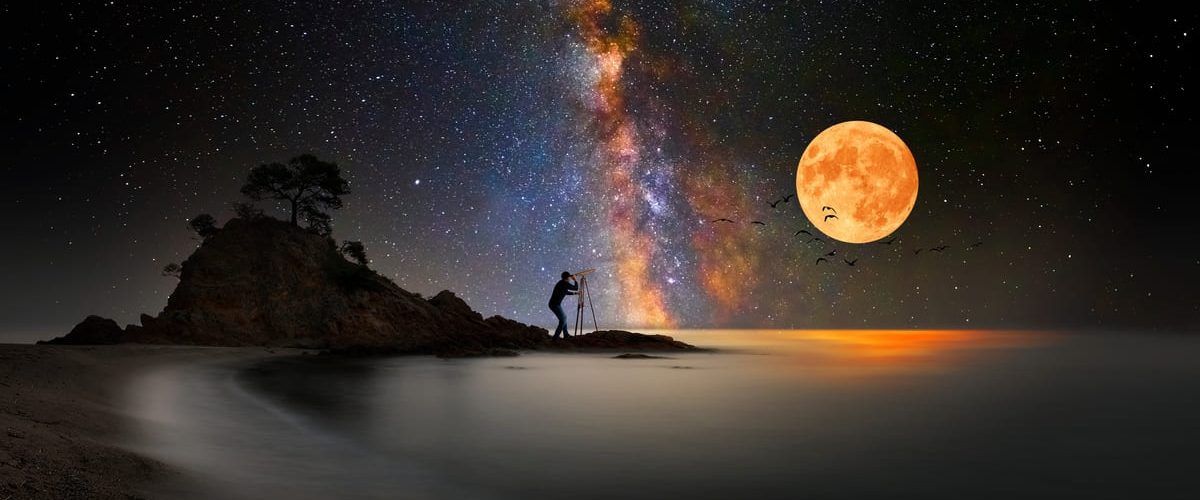






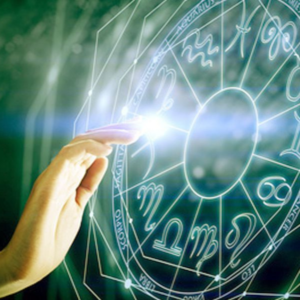
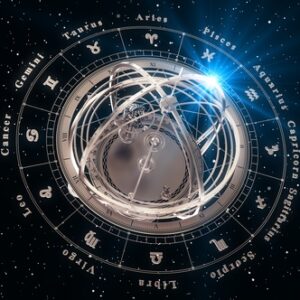
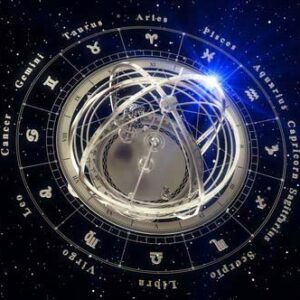
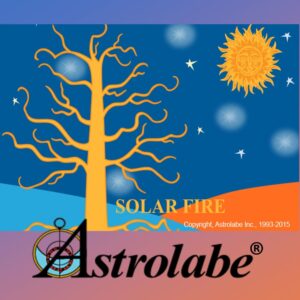
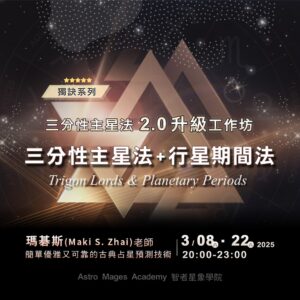
Add comment